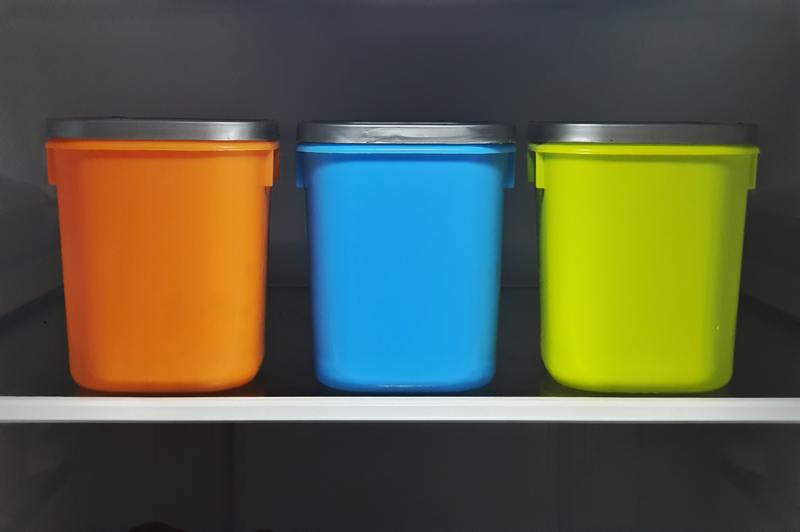If you use Tupperware, knowing how to get mold out of plastic container is important to keep you and your family healthy without having to buy new packaging. All you need to do is to properly get rid of the moldy contents, fill the container with vinegar and let it sit before washing it with warm water and dish soap.
The process is simple, but there are times when mold does not go away that easily. Continue reading to learn how to completely kill mold and everything else you need to know about cleaning out your moldy plastic container.

Getting Mold Out Of A Plastic Container
Step #1. Get rid of the moldy contents
The first thing you need to do is to empty your plastic container. Before you do so, it would be best to wear gloves and a face mask to protect yourself from mold and its spores.
Mold and mold spores can give you symptoms such as itchy eyes and skin and dizziness, so it would help to keep yourself protected.
For large amounts of mold, you might need more than a face mask to keep you safe. Check out this helpful article to know what kind of respirator you need for mold.
If the plastic container has food, you should dump it in a plastic bag and tightly seal it to prevent spores from escaping. If your plastic container has inedible objects, you might still save them by cleaning them out.
If you store your clothes in a plastic chest and the fabric grew mold, you do not have to throw all of your clothes away. For more information, you can check this article about how to remove mold from clothes with baking soda.
Step #2. Fill the container with white vinegar
Now that the container is empty, you can use white vinegar to kill the mold. Vinegar has antifungal properties because the acid content inhibits most fungal growth.
Fill your plastic food container with white vinegar, place the lid, and shut it tightly. For bigger plastic containers with non-food items, you can simply spray the vinegar onto the affected areas.
It would be best to let food containers sit overnight. You may also let it sit to make sure that the mold is thoroughly killed.
For other plastic containers, one hour may be enough.
Step #3. Wash the container
Once the container is ready, you can now dump out all the vinegar and begin cleaning. To clean out mold stains, all you have to do is wash with warm, soapy water.
For tough stains, you can use a brush with soft bristles to scrub the mold away. Make sure to wash thoroughly and dry the container using a clean piece of cloth.
If the container is clean, you can put it away. However, if there are still mold stains or the container still smells like mold, you can proceed to the next step.
Step #4. Use baking soda
If vinegar does not work, then you can try baking soda. While white vinegar is acidic, baking soda is basic.
This basicity means baking soda will expose the mold fungus to a harsh, alkaline environment where fungi cannot grow.
Simply put a tablespoon of baking soda into the plastic food container and spread it over the mold. Clamp the lid on shut and leave it overnight.
If you want to, you may also let it sit for a week. Once enough time passes, you can dump out all of the baking soda.
Like before, you will now be able to clean the area with warm, soapy water. It would help to use a brush for tough stains.
Once you are done washing, rinse and dry the container with a clean piece of cloth. You can now put it away safely or even begin using it again.
How To Prevent Mold Growth In Plastic Containers
Mold is everywhere. Mold uses spores to travel the air and find a damp, nutritious place to call home.
As such, it often finds itself on your food even if you use plastic containers.
In small amounts, the mold spores are harmless to the human body. The issue with mold arises when it starts to form visible colonies.
To prevent mold from growing in your plastic container and food, you should keep your food in airtight containers. You should also empty opened cans into clean containers and refrigerate them immediately.
Use leftovers within three days to keep them from growing fungi.
For large plastic chests, all you have to do is to keep moisture away from your container and the items inside. You can use silica gel packets to absorb excess moisture inside the plastic container and move it away from potential water sources such as pipes or leaky roofing.
Conclusion
Learning the correct steps on how to get mold out of plastic container can help you protect your family from the harmful effects of fungi while still saving your items. Using four simple steps, you can keep yourself healthy while preparing your plastic containers for immediate reuse.
